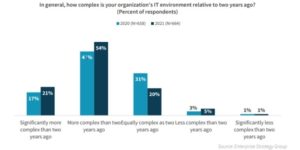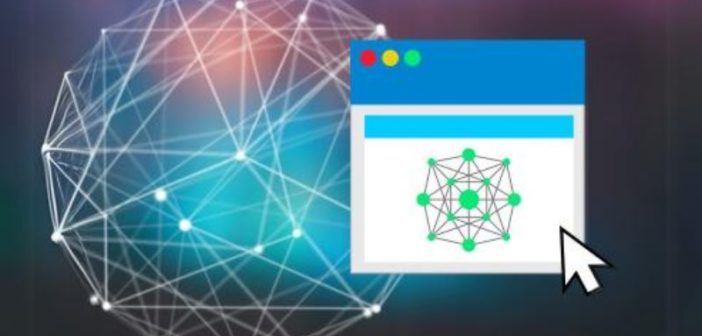The term “digital twin” technology, initially referenced with industrial use cases, is gaining popularity. An industrial digital twin is a virtual depiction of a physical product, process, or system within an industrial context like manufacturing. According to Accenture, digital twins “support better decision-making by simulating how assets behave given certain inputs.” The benefits of being able to test conditions and eliminate problems before they occur can’t be overstated in a manufacturing environment; the same digital twin technology can also provide virtual representations of complex enterprise networks.
The adoption of industry digital twins is driven by increasing operational complexity, the constant stream of data being pushed at professionals, and the need for immediate, correct decision making to drive competitive advantage. Human minds are no longer capable of analyzing all the variables in the timeframe necessary to make business decisions. A digital twin can analyze data and show exactly how the system is behaving over time. This provides the people running the business with the context and actionable insight they need for successful decision making.
Why do we need network digital twins?
In the 2023 Gartner Hype Cycle for Enterprise Networking, Gartner indicates that the complexity of enterprise networks is growing as are business demands on the network. Because the number of network updates is increasing at the same time the number of skilled resources is decreasing, IT departments need help.
The vast majority of IT professionals believe that their network is more complex than it was two years ago, and that perception is gaining momentum according to Enterprise Solutions Group.

Today’s network complexity is beyond the comprehension of the human mind. A typical enterprise network today is composed of tens of thousands of on-premises devices from dozens of vendors running billions of lines of code attached to multiple public clouds. If the complexity of an on-premises network is comparable to that of a solar system, each public cloud represents its own galaxy of complexity. A network digital twin provides a mathematically accurate virtual representation of the network including topology, device state and configuration, and a map of every possible path a packet could take.
What causes outages?
According to research firm Andover Intel, over half of network outages are caused by human error. A simple typo has taken a production network down for hours many times. Finding and remediating the problem is like searching for the proverbial needle in the haystack. When there are billions of lines of code, how do you figure out which one is causing the problem?
What can a network digital twin do?
Using a mathematical model that scales to tens of thousands devices, a true network digital twin understands the onslaught of network data. The digital model of the network normalizes network data across multiple devices and cloud vendors making it possible for operators to understand network behavior in a completely new way.
A true network digital twin also enables network engineers to query the network and ask what the problem is. Complex path searches can be performed in seconds enabling the engineer to see where traffic is being dropped, and what the rule causing the problem is. Integration with IT Service Management tools like ServiceNow can automatically create tickets and provide the responding engineer with up to date and contextual information.
Making the network searchable also enables continuous audit to ensure that the network stays in policy. Many well-intentioned engineers have fixed one problem, only to create a vulnerability or other issue. Digital twins enable engineers to regularly run policy checks that identify any non-compliant configurations, before they cause a problem.
Furthermore, understanding your segmentation, or zone to zone connectivity is perhaps the most fundamental step for protecting the network. However most enterprises don’t have a current topology and usually have devices they don’t know about in the network. When you couple that with the constantly changing nature of the environment, it is increasingly difficult to keep a current network security policy map. One company that my organization worked with paid a consulting firm $3 million for a security policy map. It took the firm three months to complete the work, meaning it was out of date before it was delivered. Because it’s mapped all connectivity and configurations, a digital twin can provide this information at a glance, in an always accurate framework depicting full connectivity, partial connectivity or no connectivity.
Forget what a digital twin does, what does it enable?
We’ve scratched the surface of the capabilities of a network digital twin, but the features are not the most important bit to understand. Like an industry digital twin, a network digital twin analyzes the behavior of a very complex environment and presents information to the decision makers charged with keeping the network successful. Not only does a network digital twin find problems but it also empowers better decision making and future-planning. Even better, by eliminating much of the manual labor involved in problem solving, it frees up time for highly skilled engineers to spend their time proactively improving the network.
Learn more about Forward Networks and digital twin networks.
Related News:
Autodesk Construction Cloud Integrations Are Expanded by EarthCam

